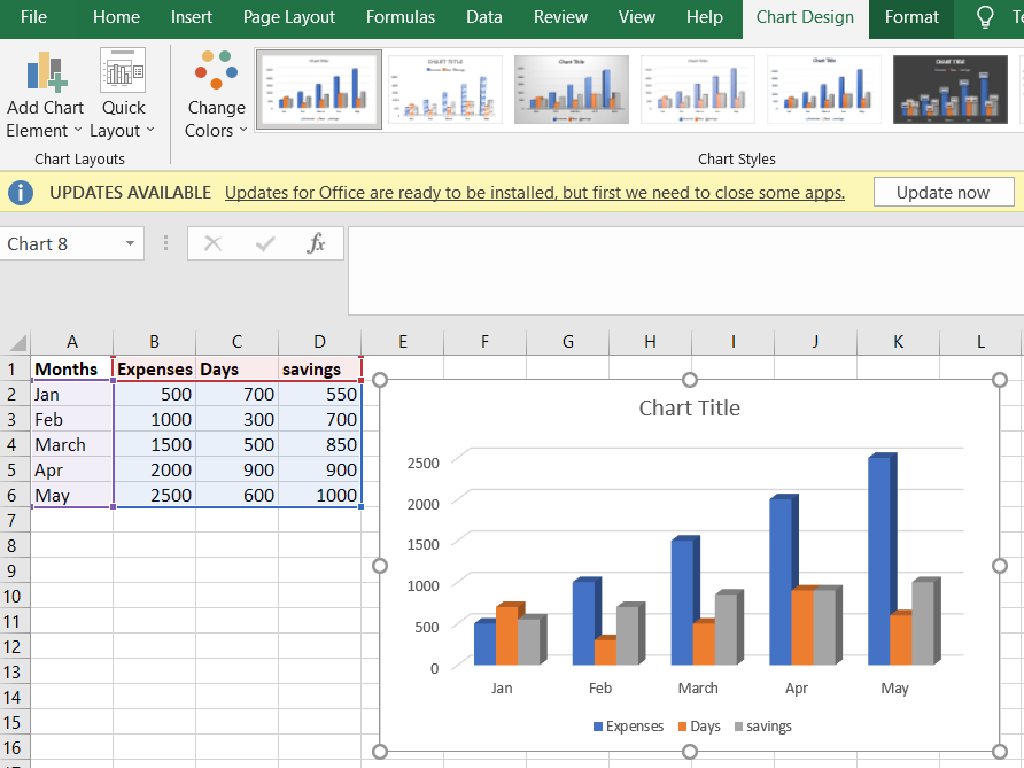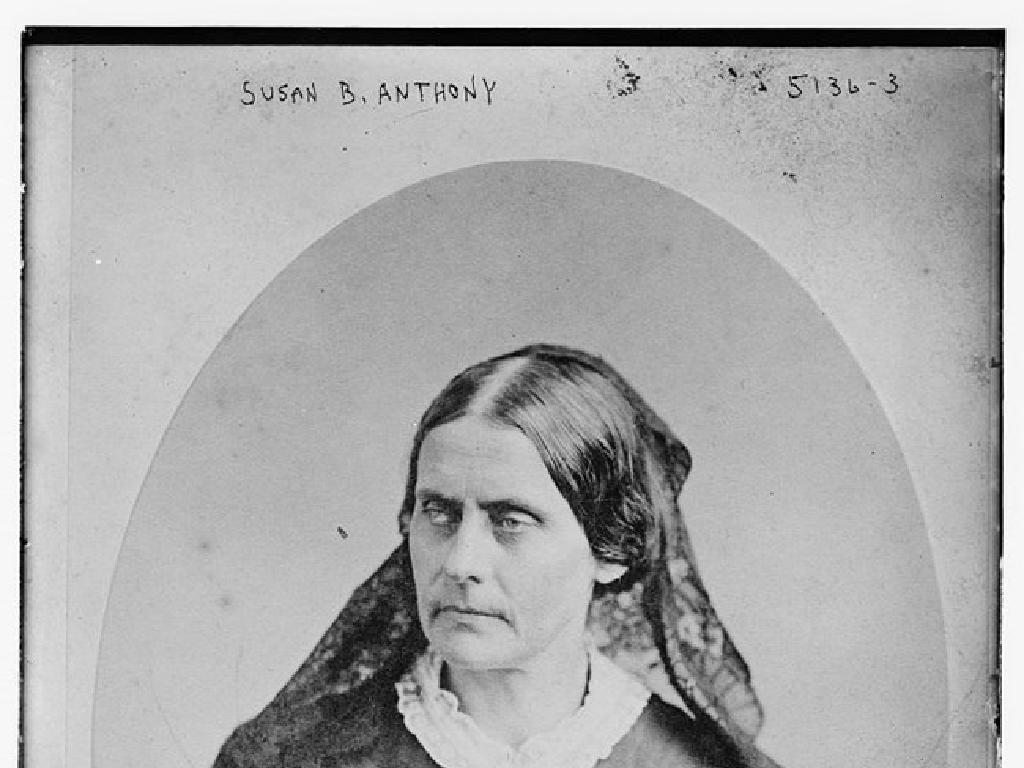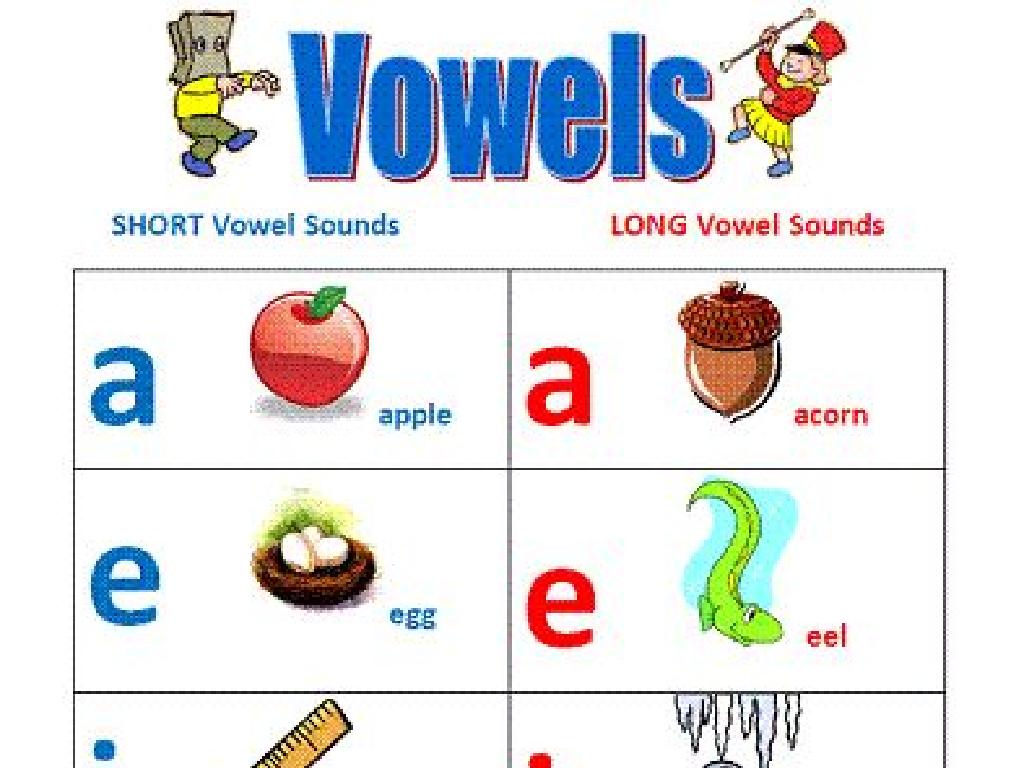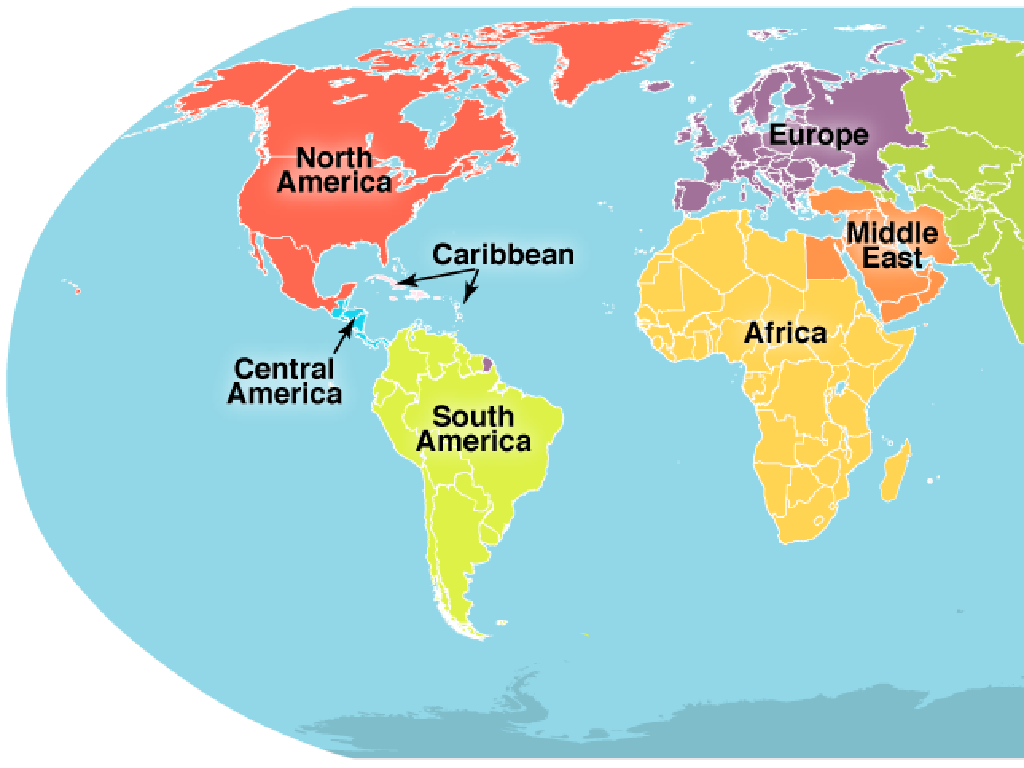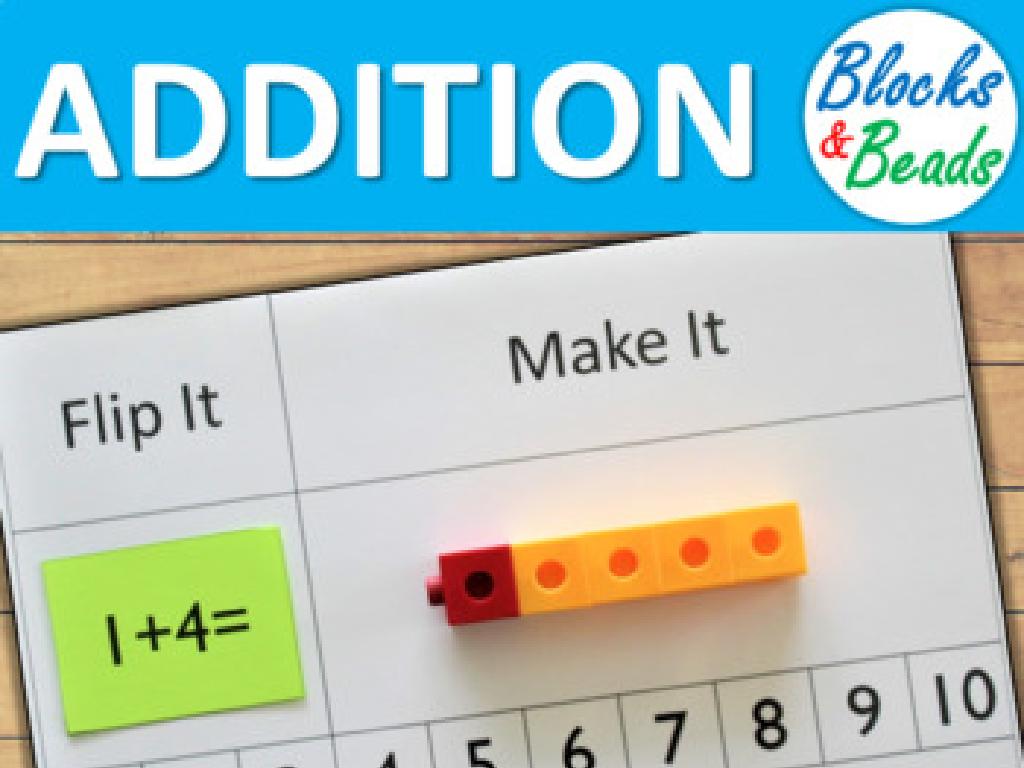Choose The Word That Matches The Picture: -Ss, -Ll, -Ff, -Zz, -Ck
Subject: Language arts
Grade: First grade
Topic: Consonant Blends And Digraphs
Please LOG IN to download the presentation. Access is available to registered users only.
View More Content
Special Sounds in Words: Blends & Digraphs
– Greetings First Graders!
– Today’s fun topic: special sounds
– What are consonant blends?
– Blends are when 2 letters make 2 sounds together, like ‘cl’ in clock.
– And what are digraphs?
– Digraphs are 2 letters making one sound, like ‘sh’ in ship.
|
This slide introduces first graders to the concept of consonant blends and digraphs, which are fundamental components of phonics and important for reading and spelling. Consonant blends involve two or more consonants blended together where each consonant’s sound is still heard, such as ‘bl’ in ‘black’. Digraphs consist of two consonants that create a single new sound, such as ‘ch’ in ‘cherry’. Use visual aids and examples to help students recognize these patterns in words. Encourage them to listen for these sounds in words during read-aloud sessions and provide practice worksheets where they can match blends and digraphs with pictures.
Consonant Blends and Digraphs
– What are consonant blends?
– Two letters make two sounds, like ‘bl’ in ‘block’.
– Examples of consonant blends
– ‘bl’ in ‘block’, ‘st’ in ‘star’. Can you think of more?
– Listening to blend sounds
– We’ll hear how blends sound in words.
– Practice with pictures
|
This slide introduces the concept of consonant blends to first graders. Explain that consonant blends involve two letters where each letter’s sound can be heard. Provide clear examples with common words they know, emphasizing the blend sounds. Play audio clips of words with consonant blends to help them associate the sounds with the letters. Finally, engage the students with a practice activity where they match pictures to words with consonant blends, reinforcing their understanding through visual aids. Encourage participation and assist students in sounding out the blends.
Exploring Consonant Digraphs
– What are consonant digraphs?
– Two letters that make one sound, like ‘sh’ or ‘ch’
– ‘ck’ as in ‘duck’
– The sound at the end of ‘quack’ or ‘pack’
– ‘ss’ as in ‘dress’
– The sound at the end of ‘miss’ or ‘grass’
– Can you find more examples?
|
This slide introduces first graders to the concept of consonant digraphs, which are pairs of letters that come together to make a single sound. Start by explaining the concept with simple examples like ‘ck’ in ‘duck’ and ‘ss’ in ‘dress’. Encourage the students to think of other words that have the same sounds. This activity helps them recognize patterns in spelling and pronunciation, which is crucial for their reading and writing skills development. Make sure to provide visual aids like pictures of the words mentioned to help them associate the sounds with the letters. Ask the students to share their examples and praise their efforts to build confidence.
Matching Sounds to Pictures
– Observe each picture closely
– Think of the word for the picture
– Choose the correct ending sound
– Sounds like ‘hiss’, ‘bell’, ‘puff’, ‘buzz’, ‘duck’
– Match -ss, -ll, -ff, -zz, -ck
|
This slide is for a class activity where students will practice matching words to pictures by identifying the correct consonant blend or digraph at the end of each word. Show pictures that clearly represent words ending with -ss, -ll, -ff, -zz, and -ck. For example, a picture of a bell would match with ‘bell’. Encourage the students to say the word out loud and listen for the ending sound. This will help them choose the right sound that matches the picture. Activities can include matching games, drawing a line from the picture to the correct sound, or even a mini-competition to see who can match them correctly the fastest. The goal is to reinforce their understanding of these specific consonant sounds in a fun and interactive way.
Practice Time: Matching Sounds to Pictures
– Look at the picture carefully
– Say the word you think of
– Think of what the object is called
– Tell me the ending sound
– Listen to the last sound in the word
– Is it -ss, -ll, -ff, -zz, or -ck?
– Choose the correct ending from the options
|
This slide is for a class activity where students will practice identifying the ending sounds of words based on pictures they see. Display a picture and ask the students to observe it closely. Then, prompt them to say the word that represents the picture out loud. Next, have them focus on the last sound of the word they just said and decide which of the given consonant blends or digraphs (-ss, -ll, -ff, -zz, -ck) matches that sound. For example, if the picture is of a duck, students should say ‘duck’ and then identify ‘-ck’ as the ending sound. This exercise helps reinforce their understanding of consonant blends and digraphs in a fun and interactive way. Prepare a variety of pictures that end with the target sounds and encourage each student to participate.
Let’s Play a Game with Ending Sounds!
– We’re playing a matching game
– Look at the picture shown
– What does the picture show? Think of the word.
– Choose the right ending sound
– Is it -ss, -ll, -ff, -zz, or -ck?
– Get ready for some fun!
|
This slide introduces a fun and interactive game to help first graders recognize and match ending sounds to pictures. The game will reinforce their understanding of the consonant blends and digraphs -ss, -ll, -ff, -zz, and -ck. Display a picture and prompt students to choose the correct ending sound for the word that represents the picture. For example, show a picture of a duck, and the students should choose ‘-ck’ as the ending sound. Encourage participation and praise correct answers to build confidence. Prepare a variety of pictures that correspond with the ending sounds for a dynamic and engaging activity.
Class Activity: Sound Matching Fun!
– Get your picture and word ending set
– Match the sounds with the pictures
– Does the picture of a bell end with -ll? Try to match it!
– Think about the sounds: -ss, -ll, -ff, -zz, -ck
– We’ll review the matches as a class
|
This activity is designed to help students recognize and match consonant blends and digraphs with corresponding pictures. Distribute pre-prepared sets of pictures and word endings to each student. Encourage them to say the word out loud to find the correct ending. For example, a picture of a duck should be matched with ‘-ck’. After the students have made their matches, go through the answers together, reinforcing the correct sounds and praising their efforts. Possible variations of the activity could include matching games, sound bingo, or a classroom ‘sound hunt’ where students find objects that match the given sounds.
Review and Share: Consonant Blends and Digraphs
– Reviewing our consonant blends
– Sharing our matching words
– Did you match ‘grass’ with -ss or ‘bell’ with -ll?
– Celebrating our learning
– Understanding blends and digraphs
– Blends are two letters making two sounds, digraphs one sound.
|
This slide is meant to recap what the students have learned about consonant blends and digraphs. Start by asking the students to review the consonant blends and digraphs they’ve learned. Encourage them to share examples of words they matched with pictures during the lesson. Praise their efforts in learning and understanding the concept of consonant blends (like -ll in ‘bell’) and digraphs (like -ck in ‘duck’), where blends combine sounds and digraphs make a single sound. For the activity, you can have students draw pictures and write the corresponding words, play a matching game, or even create a mini-book with words containing these blends and digraphs.
Great Job Today! Homework Time
– Praise for today’s work
– Homework: Find blend & digraph words
– Look for words with -ss, -ll, -ff, -zz, -ck
– Draw pictures of your words
– Use your creativity for the drawings
– Get ready to share tomorrow
|
Congratulate the students on their hard work during the lesson. For homework, they should find one word that contains a consonant blend (like ‘grass’ or ‘shell’) and one word that contains a digraph (such as ‘cliff’ or ‘buzz’). They should then draw a picture that represents each word. This activity will help reinforce their understanding of blends and digraphs and allow them to demonstrate their knowledge creatively. Prepare to have students share their words and drawings in the next class, fostering a fun and interactive learning environment.

